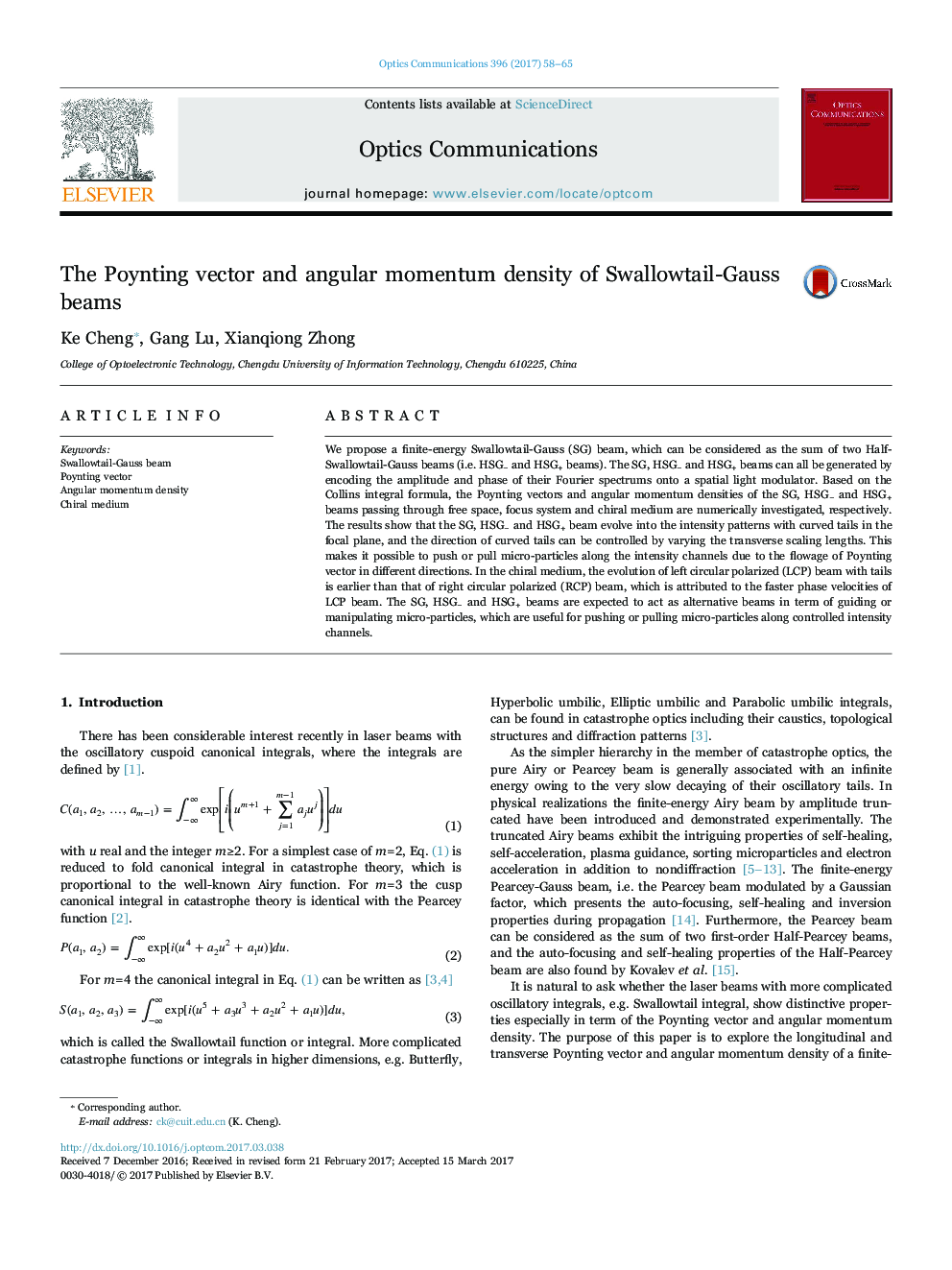| Article ID | Journal | Published Year | Pages | File Type |
|---|---|---|---|---|
| 5449398 | Optics Communications | 2017 | 8 Pages |
Abstract
We propose a finite-energy Swallowtail-Gauss (SG) beam, which can be considered as the sum of two Half-Swallowtail-Gauss beams (i.e. HSGâ and HSG+ beams). The SG, HSGâ and HSG+ beams can all be generated by encoding the amplitude and phase of their Fourier spectrums onto a spatial light modulator. Based on the Collins integral formula, the Poynting vectors and angular momentum densities of the SG, HSGâ and HSG+ beams passing through free space, focus system and chiral medium are numerically investigated, respectively. The results show that the SG, HSGâ and HSG+ beam evolve into the intensity patterns with curved tails in the focal plane, and the direction of curved tails can be controlled by varying the transverse scaling lengths. This makes it possible to push or pull micro-particles along the intensity channels due to the flowage of Poynting vector in different directions. In the chiral medium, the evolution of left circular polarized (LCP) beam with tails is earlier than that of right circular polarized (RCP) beam, which is attributed to the faster phase velocities of LCP beam. The SG, HSGâ and HSG+ beams are expected to act as alternative beams in term of guiding or manipulating micro-particles, which are useful for pushing or pulling micro-particles along controlled intensity channels.
Related Topics
Physical Sciences and Engineering
Materials Science
Electronic, Optical and Magnetic Materials
Authors
Ke Cheng, Gang Lu, Xianqiong Zhong,
